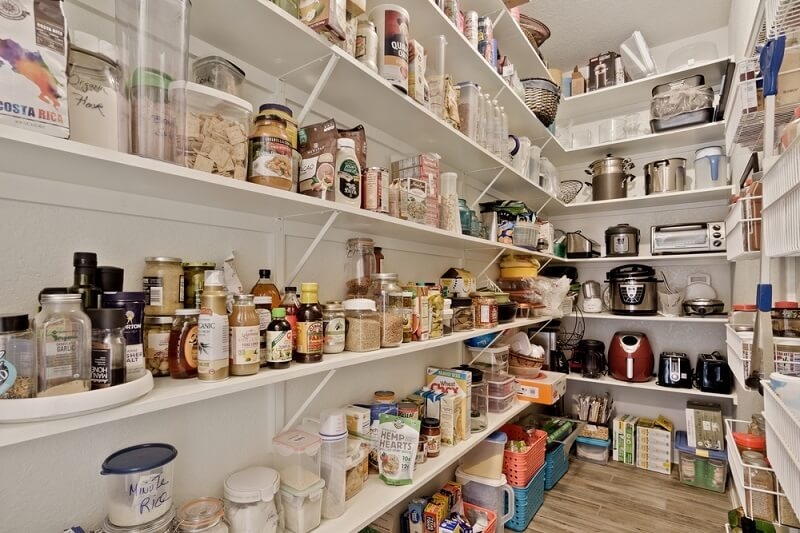
An unorganized pantry doesn’t just look bad; it wastes your time and money and contributes to food waste. You have probably had your own experiences of discovering expired canned goods or buying a third jar of peanut butter because the previous two were hidden behind snack boxes.
With the right strategies, you can turn your messy storage area into a well-oiled machine of a food system. The last pantry organization tip—use bins, labels, & rotation for efficiency—will allow you to tidy up your shelves, reduce waste, and keep meal prep faster and easier.
Whether you have a spacious walk-in pantry or a tiny cabinet pantry, these tips and methods—including labeling pantry bins, efficient shelf-stacking systems, and pantry rotation—will suit every home and budget.
Before you implement any organizational system, you must know what you're dealing with. Start by:
This process gives you a good inventory while finding duplicates, expired items, and items you didn't even know you had.
One of the most significant missed opportunities for pantry organization is setting up your layout according to the frequency of use.
Organize your pantry by zones:
By designing your pantry like a grocery aisle, you can minimize your search for what you need and avoid clutter.
Bins are the framework of a tidy pantry. They keep your things together, organized, and movable.
Organize your pantry bins and label them with things like
Using clear bins will help you see when you need to replenish stock.
Labels are more than just a finishing touch—they’re essential to maintaining your system long-term.
For a uniform look, use chalkboard labels, pre-printed stickers, or a label maker: label shelves, bins, and even jars of bulk goods like rice, flour, and oats.
This simple habit encourages everyone to return items to the correct place and keeps your system sustainable.
The pantry rotation method—the FIFO method (First In, First Out)—helps minimize waste and keep food fresh.
This system is handy for canned items, boxed goods, and perishables like snacks or baking mixes with shorter shelf lives.
By rotating stock regularly, you maintain better control over what you have and what needs to be used soon.

You can use a shelf-stacking guide to use every inch of vertical space.
Store heavier items on bottom shelves and lighter, often-used items in the middle for ergonomic ease.
Buying in bulk can save money, but improper storage can lead to clutter or spoilage. These bulk-buying storage tips will help you store large quantities efficiently.
Avoid leaving large, open bags in your pantry—they attract pests and create chaos.
If your pantry has a door, don’t let that space go to waste.
These additions are perfect for maximizing pantry organization on a budget by using what you already have.
A dedicated “snack bin” or shelf keeps grab-and-go items organized and easily accessible.
This makes it easier for kids to help themselves without digging through the entire pantry and making a mess.
The best organizational system is one you can maintain. Incorporate monthly check-ins to keep your pantry running smoothly.
Spending 15–20 minutes a month can prevent major overhauls later.
You don’t need to spend a fortune to get organized. Here are a few pantry organization on a budget ideas that are both functional and frugal:
With a bit of creativity, even the most basic pantry can become a model of efficiency.
Too many items in a tight space lead to chaos. Leave space for visibility and airflow.
Always check before you store, especially with bulk goods.
Someone may put it in the wrong spot if you don't label it.
Please measure your space and assess your needs before investing in bins.
While a well-ordered pantry may offer the advantages of nice-looking shelves, it further supports healthier eating habits, smarter grocery shopping, and waste reduction. Using the ultimate pantry organization tips—bins, labels, and rotation for use efficiency—allows you to rejuvenate your kitchen and create a stress-free, functional environment that serves your family daily.
Whether you have titled your bin and used some rotation to ensure that fresh food is used first, learned how to label pantry bins and use a system that allows you to create a kid snack station, or introduced the pantry rotation method to breathe freshness into your pantry, each procedure gets you closer to the enjoyable and thoughtful kitchen that you desire.
This content was created by AI